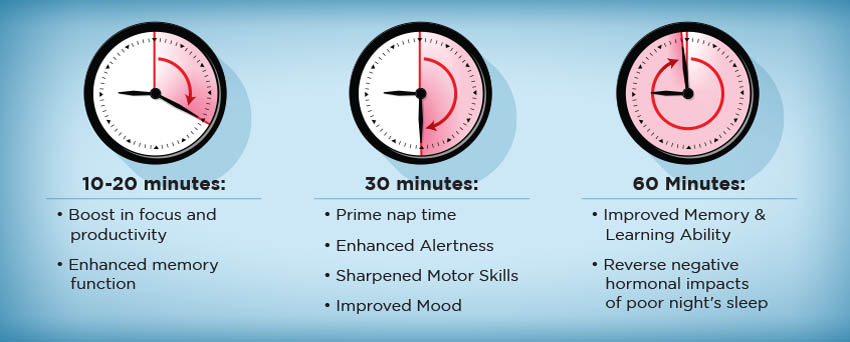Sleep & Health
Naps. Sometimes you just need one. As a child, afternoon nap time was your least favorite activity. Now as adult, that nap is something you wish could be brought back on a daily basis. It’s okay, you can still nap. Actually, they can help you with everyday productivity.
On average, 35.3% of adults report getting less than seven hours of sleep each night. A daytime nap can help treat sleep deprivation, and give you that energy boost to get through the rest of the day.
So, why should you nap? There are a lot of studies done that discuss the benefits of napping. Here are some of the perks:

-Reduced Stress
-Enhanced Performance Levels
-Improved Mood
-Better Memory and Reaction Time
-Reduction in Mistakes and Accidents
-Gain relaxation and rejuvenation
Be careful though! Napping can cause sleep inertia, which leaves you feeling groggy post waking up from a deep sleep. If you nap for too long, it can affect your nighttime sleep quality.
Now that you understand the benefits, it’s time to schedule out your nap time. Prime napping hours are in the middle of the day, between 1 p.m. and 3 p.m. It’s important to have a consistent time, so your body gets adjusted to the new pattern.
Don’t forget to set your alarm for 30 minutes or less from the start time. According to the Sleep Foundation, 20-30 minutes is the recommended amount of naptime. Staying within this timeframe will allow you to improve your alertness while still being able to have a full night of sleep.

The 60-minute nap can help with remembering facts, names, faces, and also reverse some of the hormonal impacts from last night’s poor sleep. However, this amount might interfere with your nighttime sleep.
You do have other options. For those in a time crunch, the power nap (10-20 minutes) can help boost focus and productivity.
The shorter nap times help prevent grogginess that come from falling into the deep sleep cycle.
Now, let’s talk perfect nap environment.
You will need to consider the following while creating the ideal environment for your nap:
-Keep it dark, whether
-Warmth is your friend, so keep a blanket on hand
-Embrace the quietness in a room
-Make sure it is comfortable
Remember, you still need to get a full night’s sleep. A nap isn’t a good substitute. Use a nap, on occasion, when you missed a few hours and really need that extra boost to get through the day. Your body does all of its main reconstructive work during that prime nighttime sleep. Make sure your getting the right amount of sleep. Plus, you probably won’t even need a nap.
